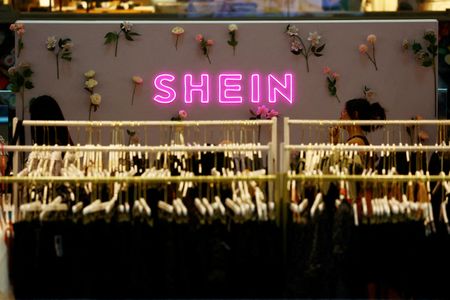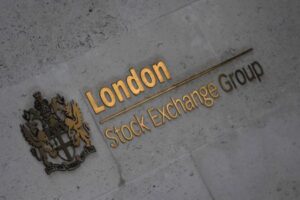By Helen Reid
LONDON (Reuters) – Fast fashion retailer Shein found two cases of child labour at its suppliers last year, it said in its 2023 sustainability report, as it stepped up audits of manufacturers in China to assuage criticisms of its low-cost business model ahead of a planned flotation.
Shein said in the report on Thursday it had suspended orders from the suppliers that had employed children under 16, sourcing from them again only after they had strengthened their processes, including checking workers’ identity documents.
The company said both cases had been “resolved swiftly”, with remediation steps including ending underage employees’ contracts, arranging medical checkups, and facilitating repatriation to parents or guardians as necessary.
Shein tightened its supplier policy last October after the child labour cases were found, so that any severe breaches – called “Immediate Termination Violations” – would result in ending the relationship with the supplier immediately.
Previously, suppliers such as those that employed minors had 30 days to resolve the issue, failing which Shein would cut ties.
Annabella Ng, senior director of global government relations at Shein in Singapore, said the updated supply chain policy took into account feedback from regulators and suppliers.
The company had not previously reported the number of cases of child labour, citing only the percentage of audits that found minors in the workplace. That violation was found in 1.8% of supplier audits in 2021, 0.3% of audits in 2022, and 0.1% in 2023.
“We remain vigilant in guarding against such violations going forward, and in line with current policies, will terminate any noncompliant suppliers,” Shein said in the report.
Shein, which has grown rapidly selling $5 tops and $10 dresses online to shoppers around the world, said 3,990 audits were conducted in 2023, up from 2,812 in 2022 and 664 in 2021.
It used Bureau Veritas, Intertek, Openview, SGS, Tuv Rheinland and QIMA for 92% of its audits last year, and said it aims for 100% of audits to be done by such third-party agencies.
Overall the audit results Shein published showed fewer serious violations than last year.
EMISSIONS SURGE
Shein’s 2023 sustainability report, published more than a year after the 2022 report, will be pored over by investors weighing whether to buy shares in the retailer if and when it lists. The group filed for an initial public offering in London in early June.
In an introductory note, Shein CEO Sky Xu said improving Shein’s supply chain governance and managing its carbon footprint, particularly indirect “scope 3” emissions, were “critical” areas for the company.
Shein sends products directly from suppliers in China to customers by air, and its emissions from transporting products more than doubled in 2023 to 6.35 million tonnes of carbon dioxide equivalent, the report showed.
The company has 5,800 contract manufacturers in total, with most located in China’s Guangdong province.
It has started sourcing some products from suppliers closer to its consumers, in Turkey and Brazil, which it said would help it cut transport emissions. It said it had saved 49,578 tonnes of CO2 equivalent last year by switching from air to sea and land freight to transport those products.
Shein said it submitted emissions reduction goals in June this year to the Science-Based Targets Initiative, the leading global arbiter of how companies set climate targets, and is undergoing the validation process.
It also said it had established a board-level sustainability committee in July last year, comprising its CEO, executive chairman and three representatives of investors – HongShan partner Jiajia Zou, Global Head of ESG at General Atlantic Cornelia Gomez, and Brookfield Growth Managing Partner Josh Raffaelli.
Asked whether Shein had created the committee to bolster its governance because of the upcoming flotation, Ng said she could not comment on any IPO-related questions.
“But definitely we have been looking at enhancing our governance structures as part of our overall ESG journey towards more transparency and accountability,” she said.
(Reporting by Helen Reid; Editing by Jan Harvey)





